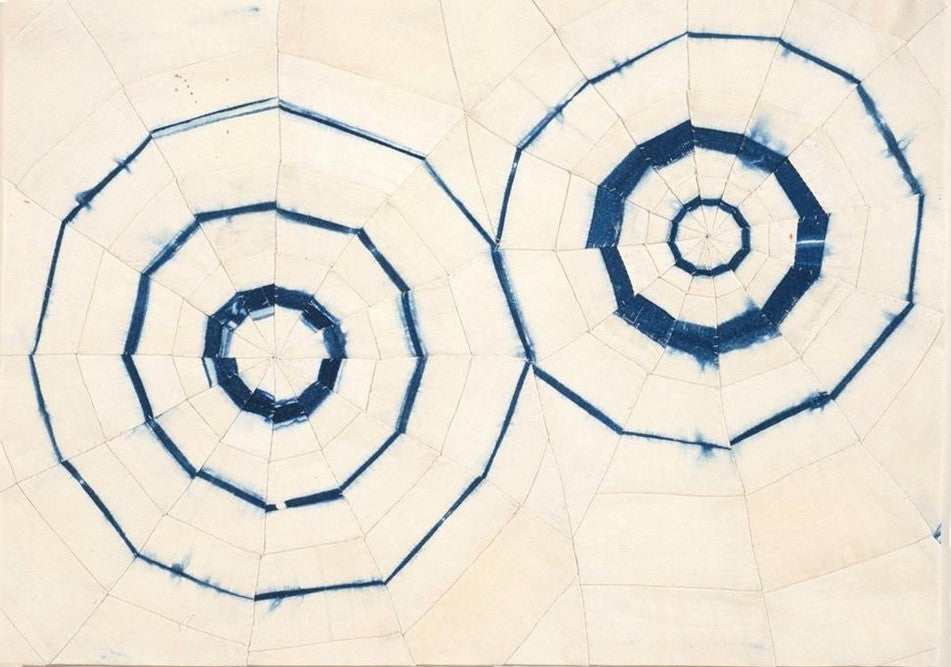
TAPESTRY TALES: LOUISE BOURGEOIS
Louise Bourgeois: The Fabric Works, Untitled 2005, Fabric.
When Louise Bourgeois (1911-2010) moved from her native France to New York in 1938 she took many things with her: materials, memories, themes, colours and ideas. The art of tapestry was among them. Growing up in a tapestry workshop on the banks of the River Bievre run by her mother, Bourgeois was accustomed to living among the scavenged scraps, fabric hoardings and mending tools – needles and thread - of her parents, which she later associated with emotional repair. She absorbed the empty furniture upholstered in worn tapestry fabric, the table-cloths, wall hangings and faded drapes round empty beds. “I became an artist, whether I wanted to or not,” she said.
In 1982, when she began to achieve recognition in New York, she recalled; “my parents, who repaired Aubusson tapestries, needed someone to draw on canvas for the weavers. Very early it was easy for me to draw the missing parts of these large tapestries. There were always missing parts, whether an arm, a leg or something else.” She was, says art academic Robert Storr, intensely invested in the pictorial and tactile qualities of Baroque tapestry and some of the imagery in her drawings originates from these surfaces, such as the sphinx and the she-cat.

Image: Louise Bourgeois, Untitled, 2002. Collection The Easton Foundation. Photo Christopher Burke.
From the 1960s onwards, she used soft materials, including tapestry fragments to create stuffed hand-sewn figures, heads, and stacks of tapestry cushions like totems – a column of textile units of diminishing size. Some critics argue against making too much of a connection between Bourgeois’ upbringing and the stitched work that followed. Says Linda Nochlin, “Bourgeois’ grotesque handiwork in much of the stuffed sculpture is hardly in the tradition of professional tapestry conservation. On the contrary, its power lies in the deliberate ferocity of its bad sewing…” Nevertheless, the tapestry workshop and its association with her mother finds expression in the repeated motif of the spider. “The spider is a repairer. If you bash into the web of a spider, she doesn’t get mad. She weaves and repairs it.” (Bourgeois, 1998).
Image: Louise Bourgeois, Untitled, 2002. Needlepoint and aluminium. Glenstone Museum, Potomec, Maryland. Image: Louise Bourgeois, Untitled, 2000. Private Collection, Courtesy Hauser & Wirth. Photo Christopher Burke.
Image: Louise Bourgeois, Untitled, 2000. Private Collection, Courtesy Hauser & Wirth. Photo Christopher Burke.
Spider (1997) comprises one of her giant steel arachnids above a metal cage on which are fixed fragments of old weavings. Inside the cage is an armchair also upholstered in tapestry and above it a clutch of eggs wrapped in fabric. The sculpture plays on ambivalence: mother-predator; repair-destroy. Image: Louise Bourgeois, Spider, 1997. Detail. Steel, glass, tapestry, wood, silver, gold, bone, rubber.
Image: Louise Bourgeois, Spider, 1997. Detail. Steel, glass, tapestry, wood, silver, gold, bone, rubber.

1 comment
Louise Bourgeois was such an inspirational artist! She created marvelous and very original textile art!